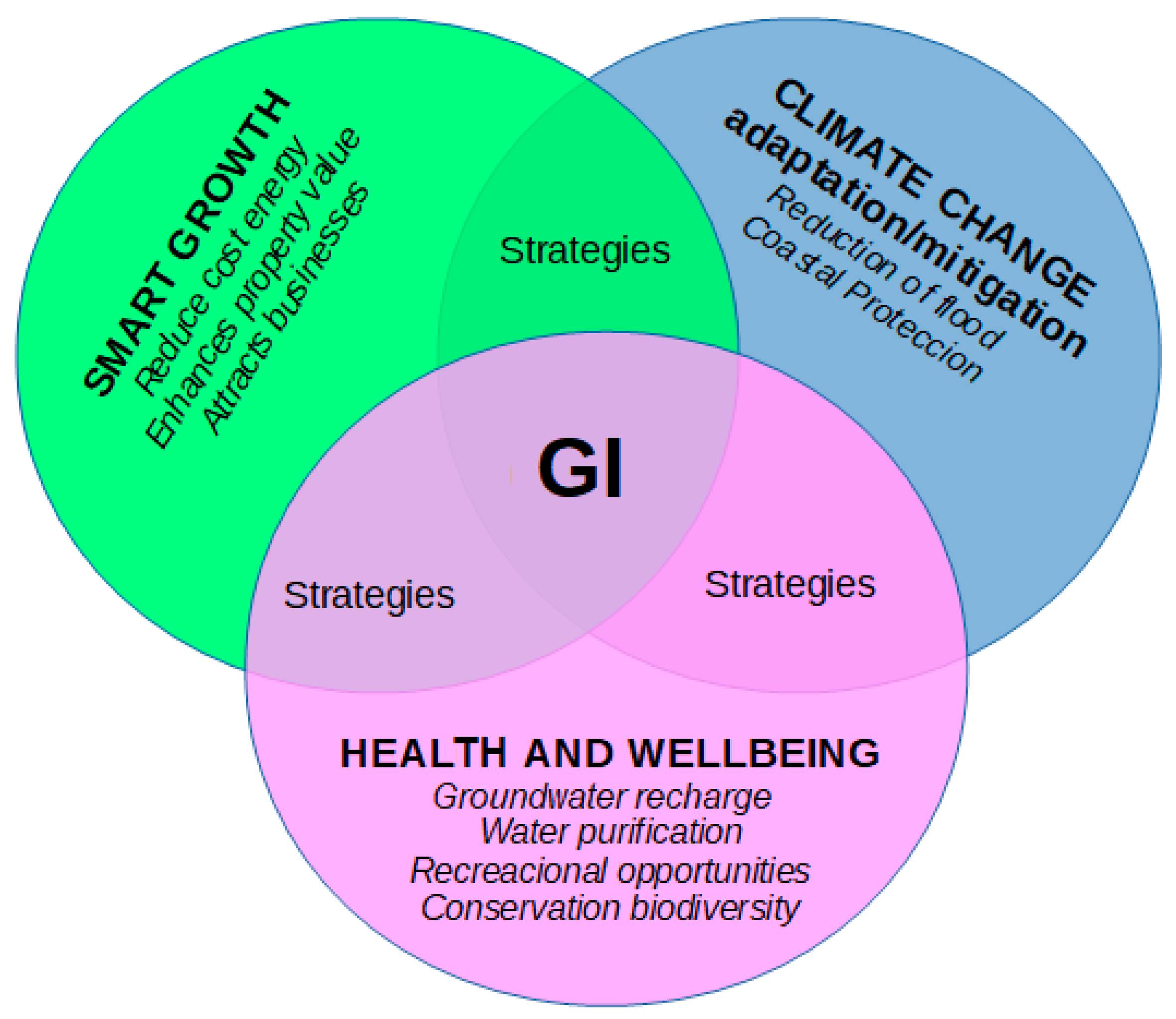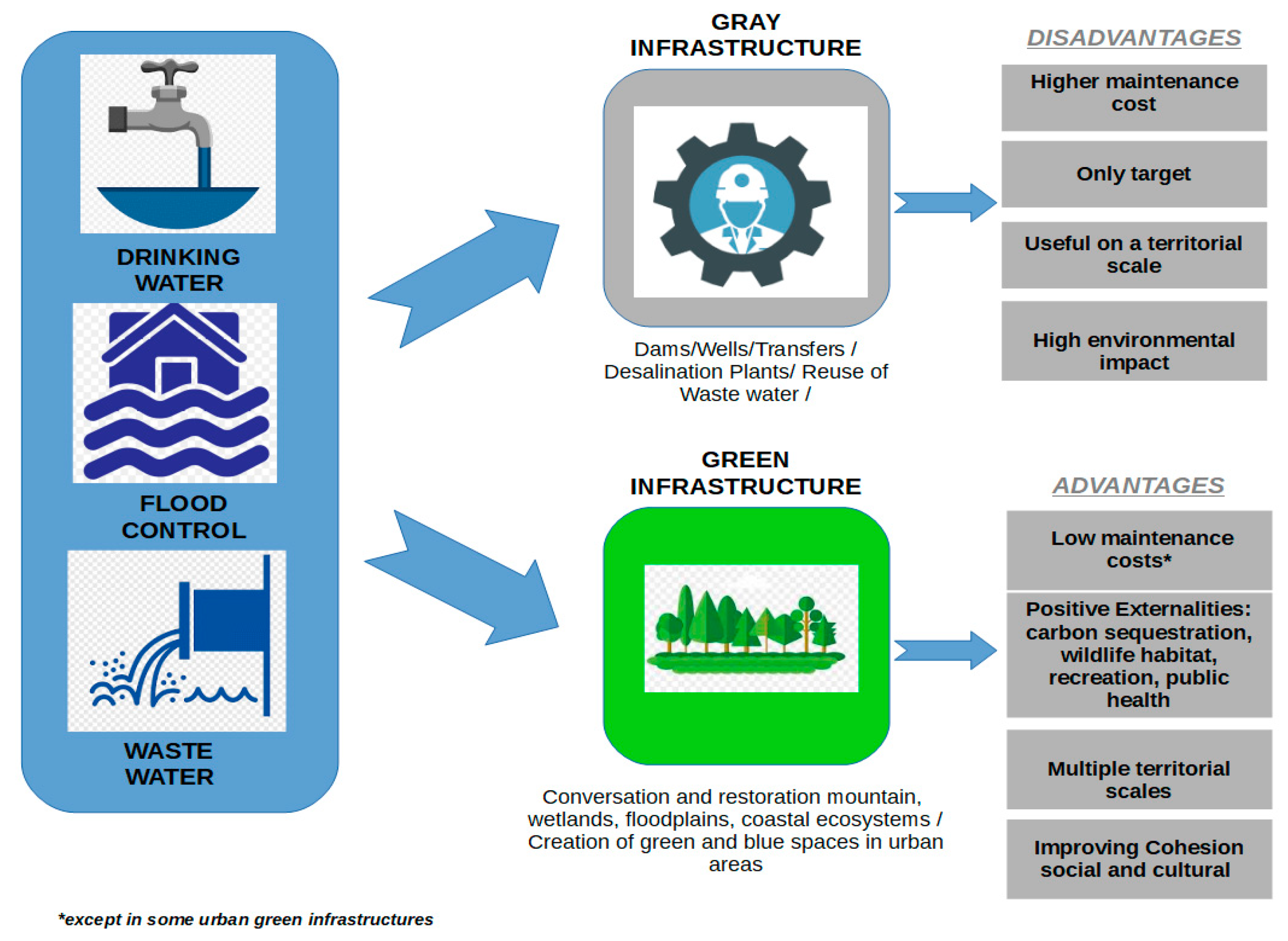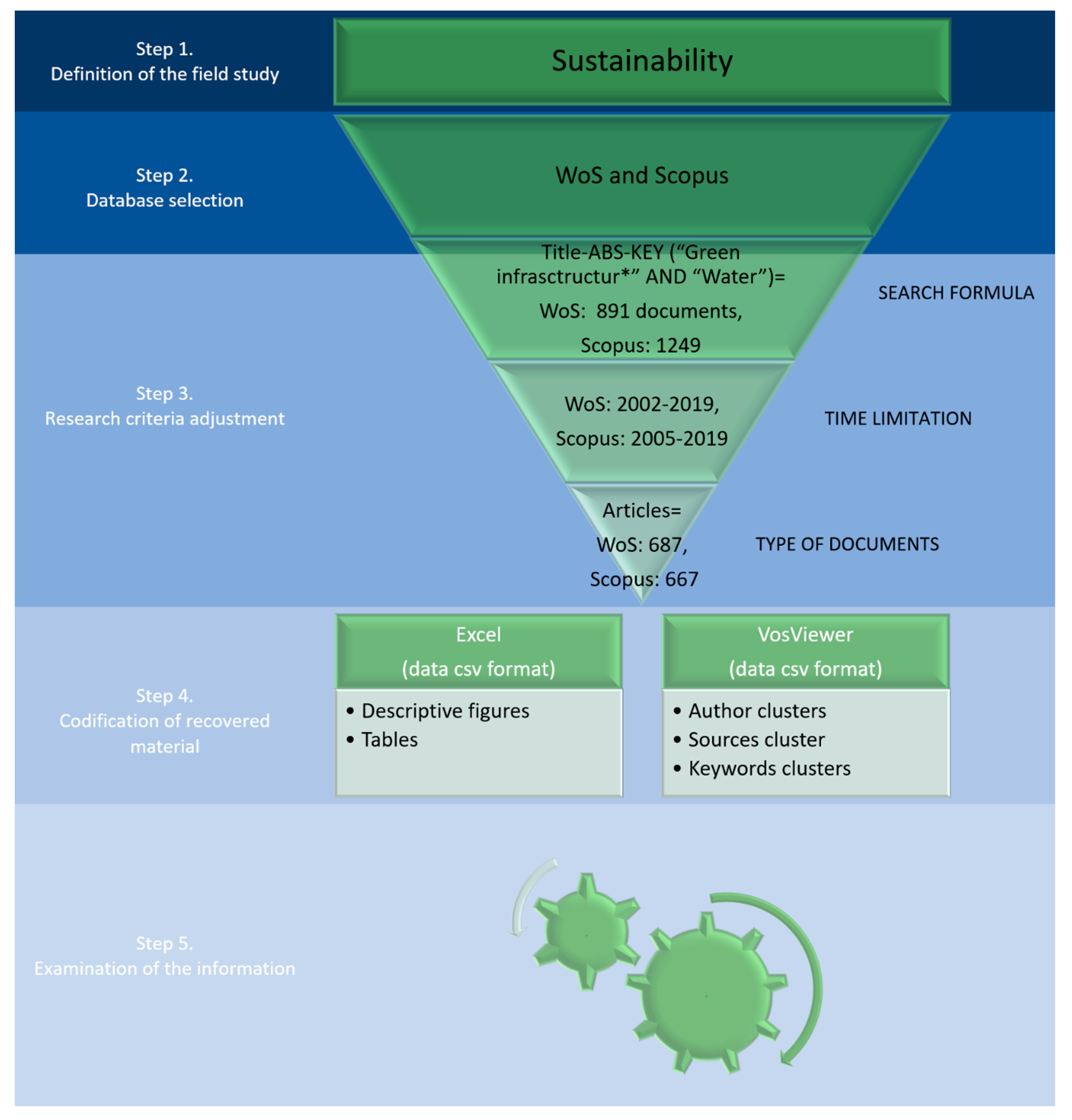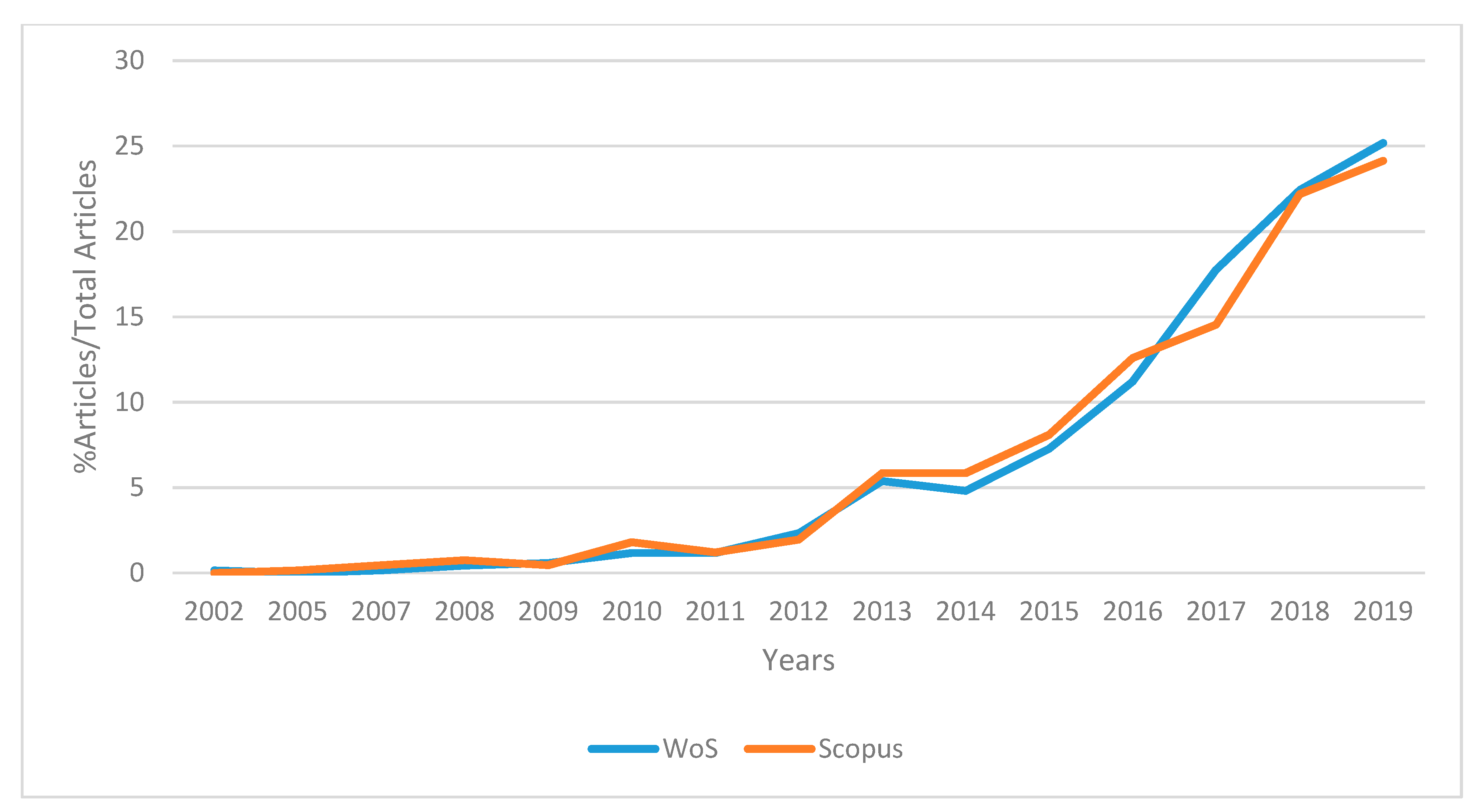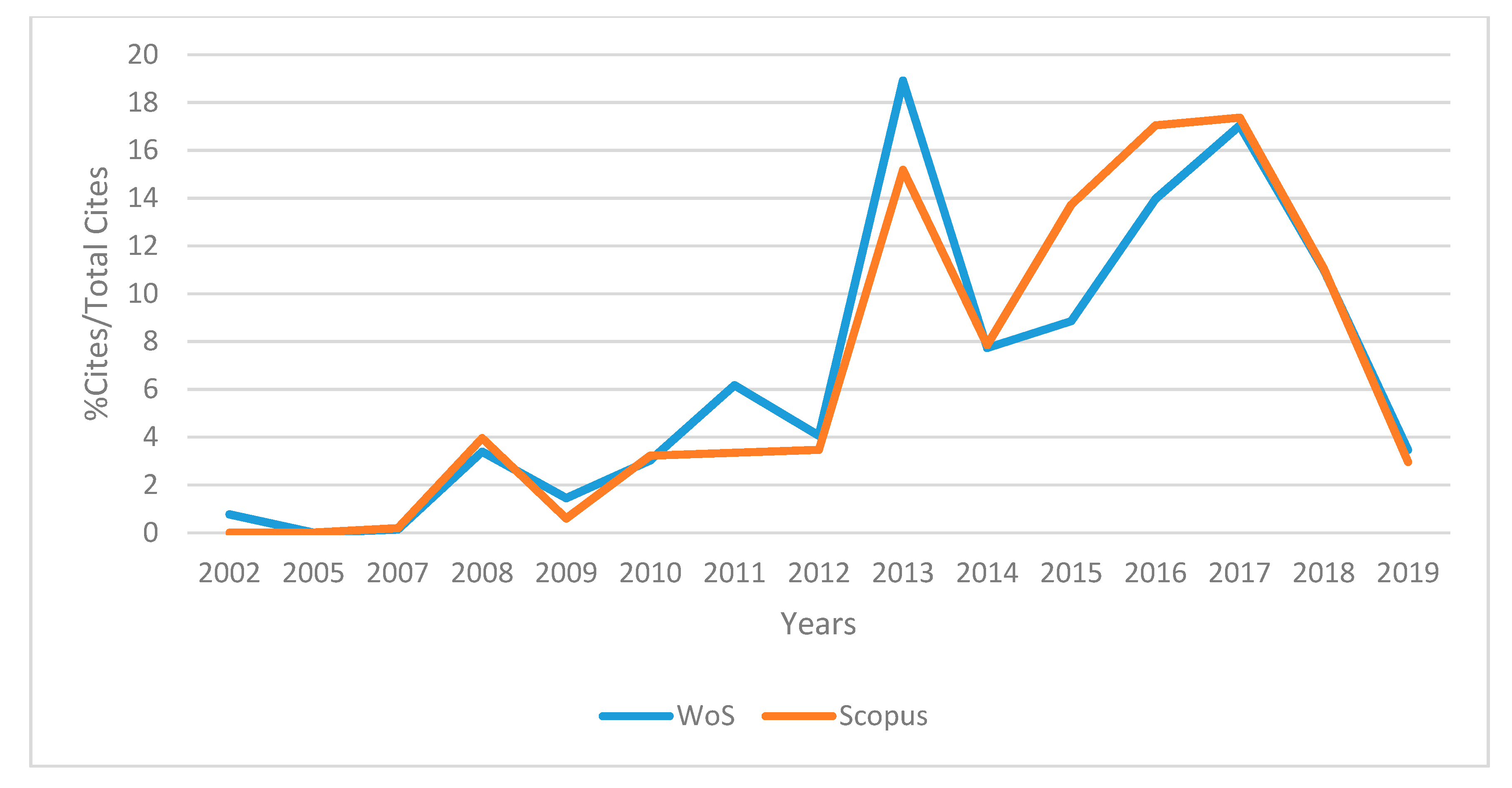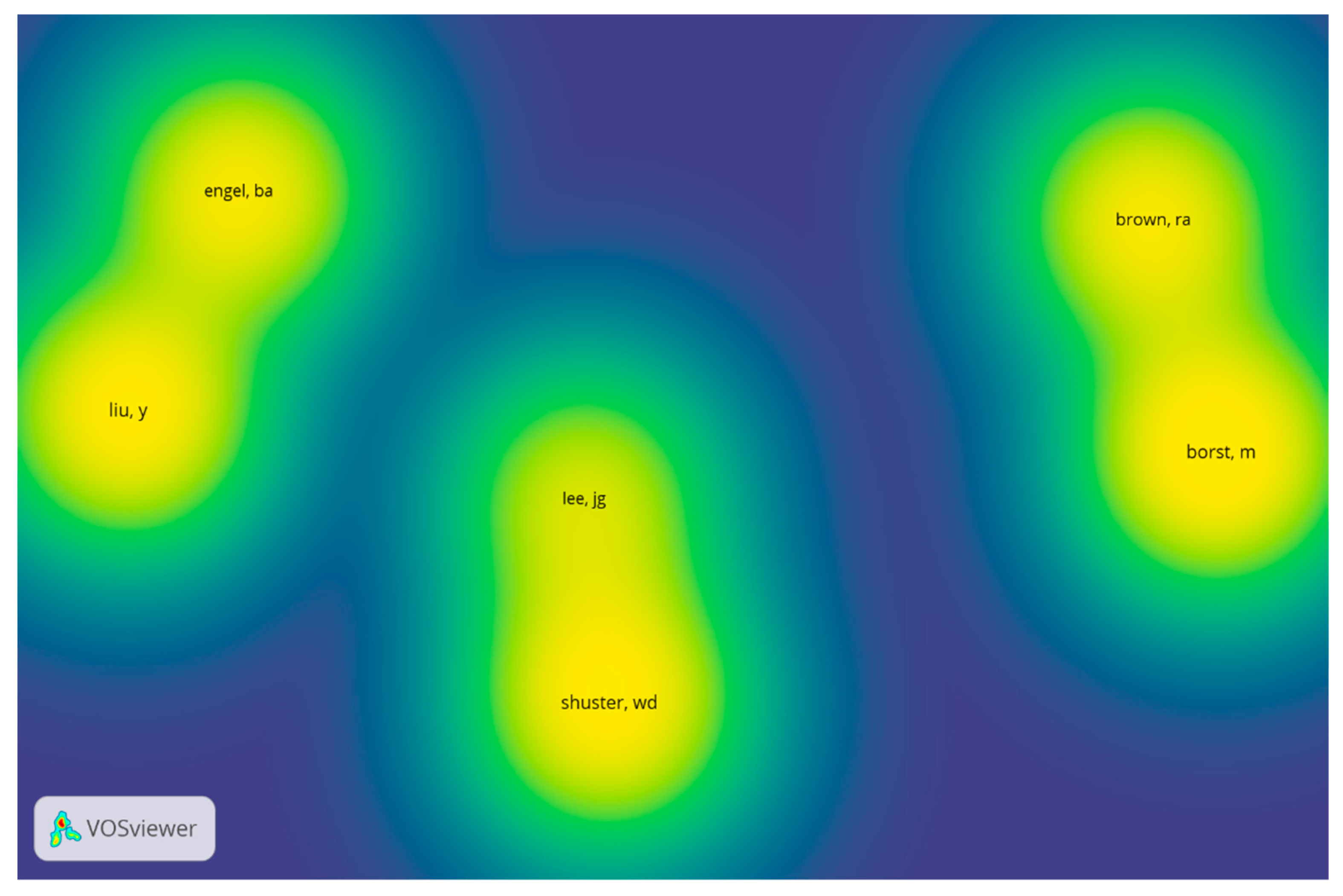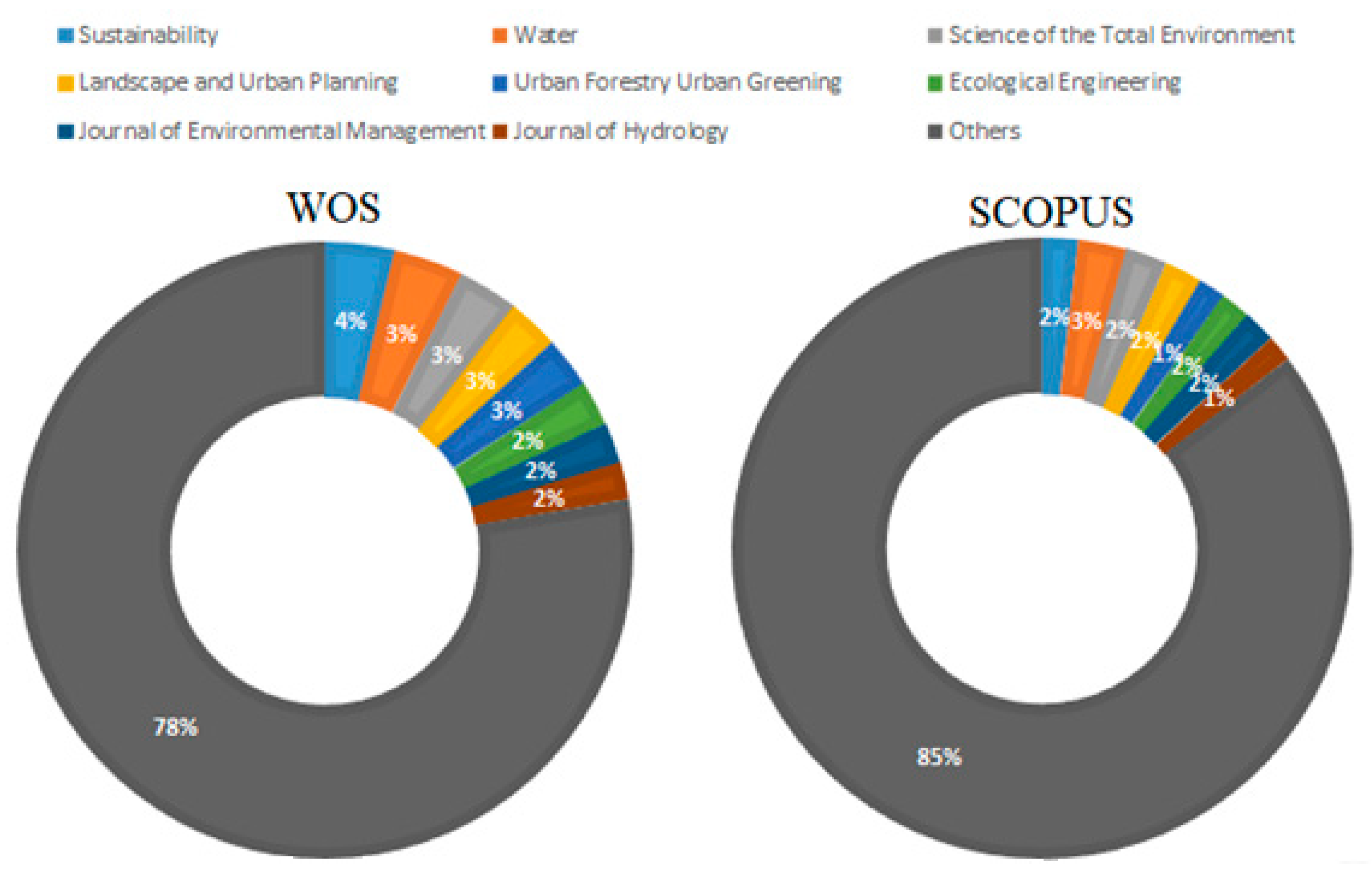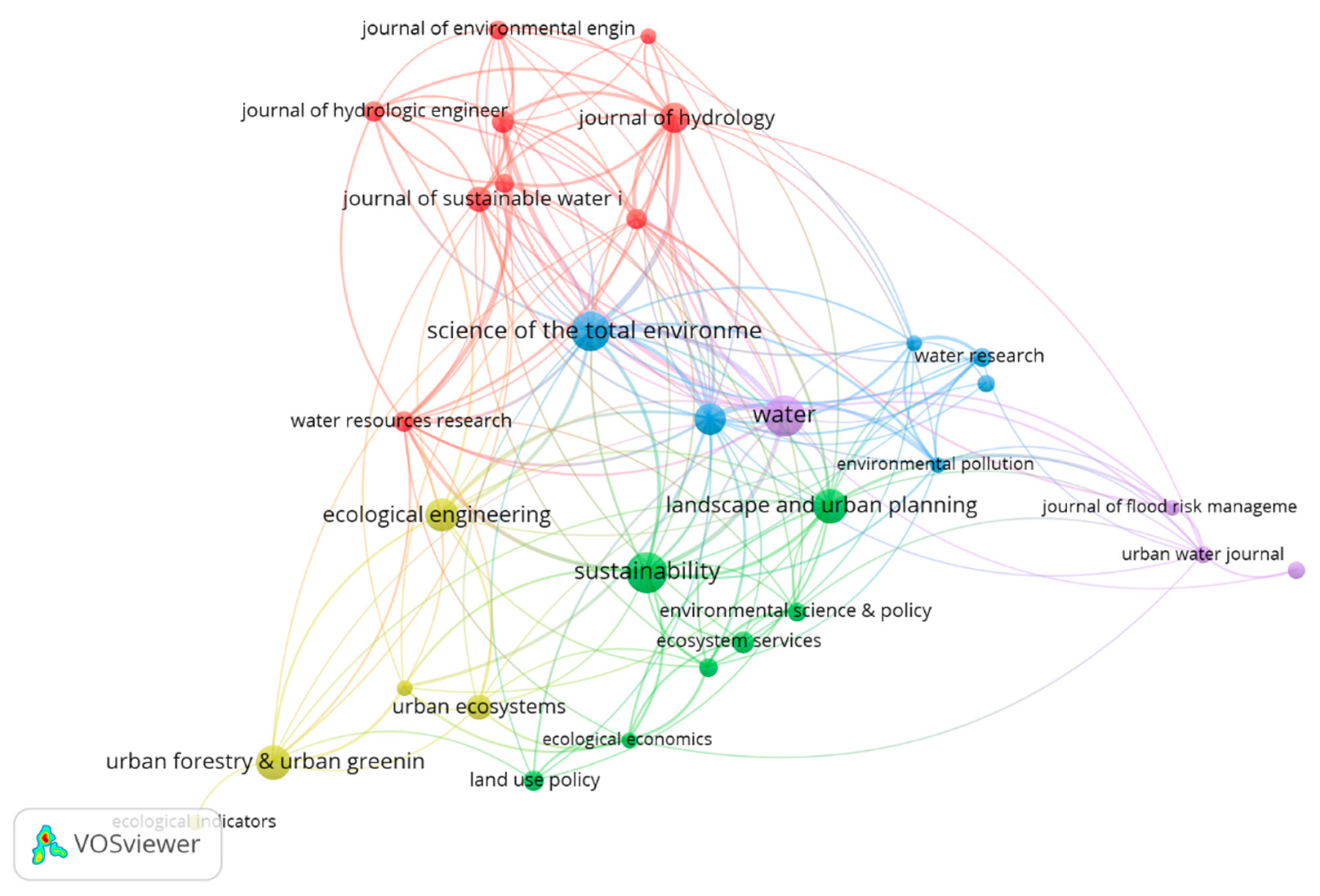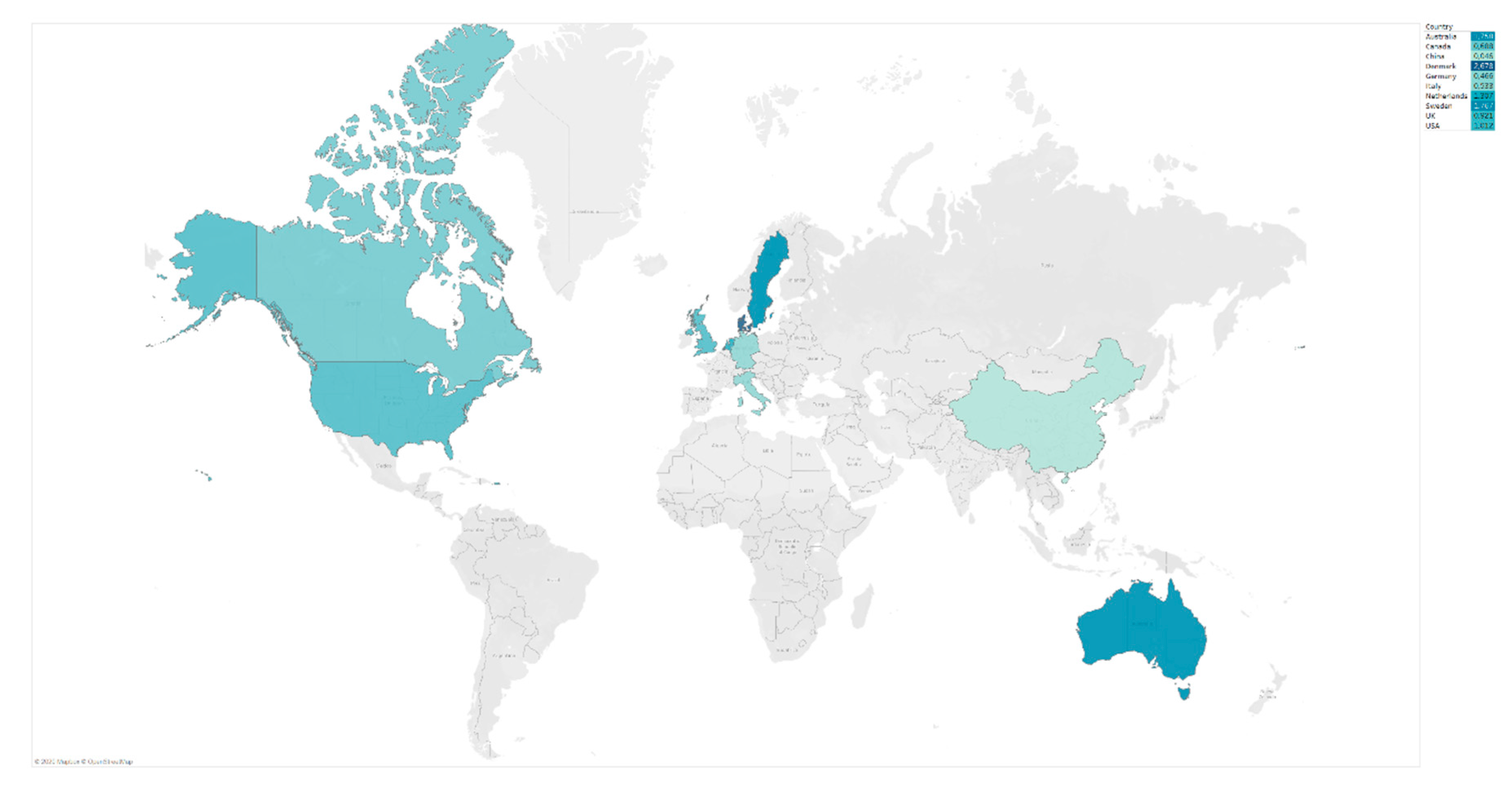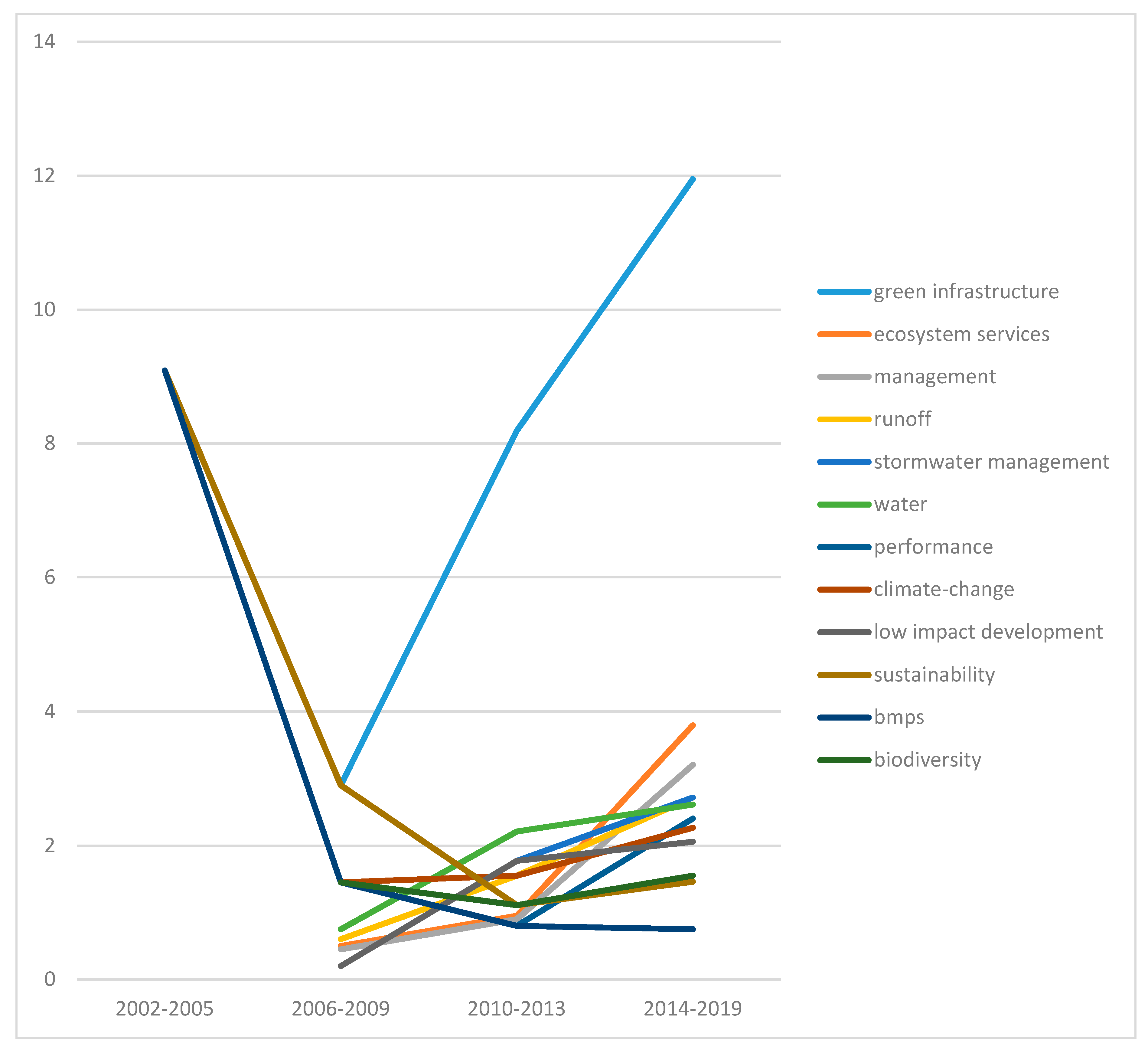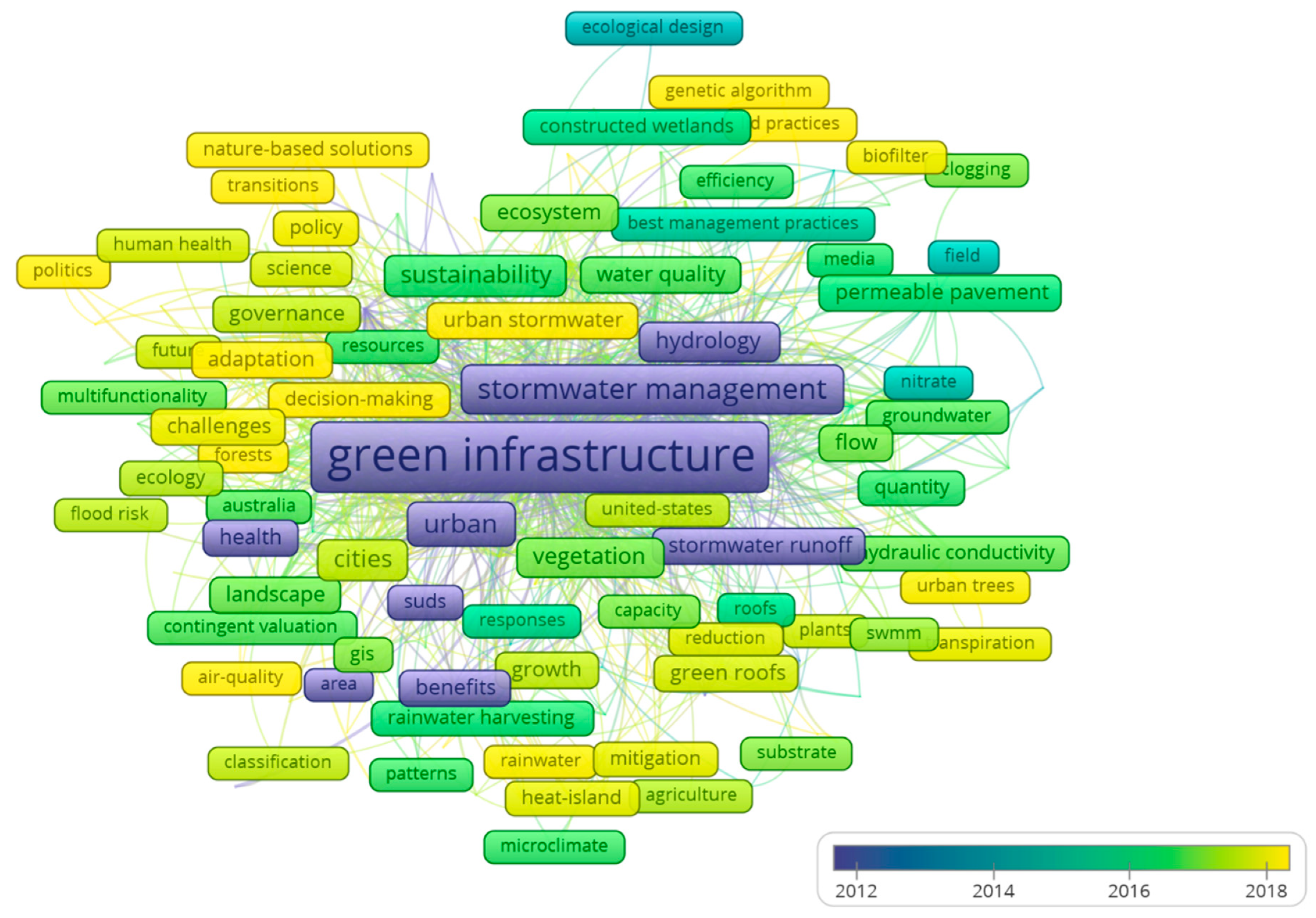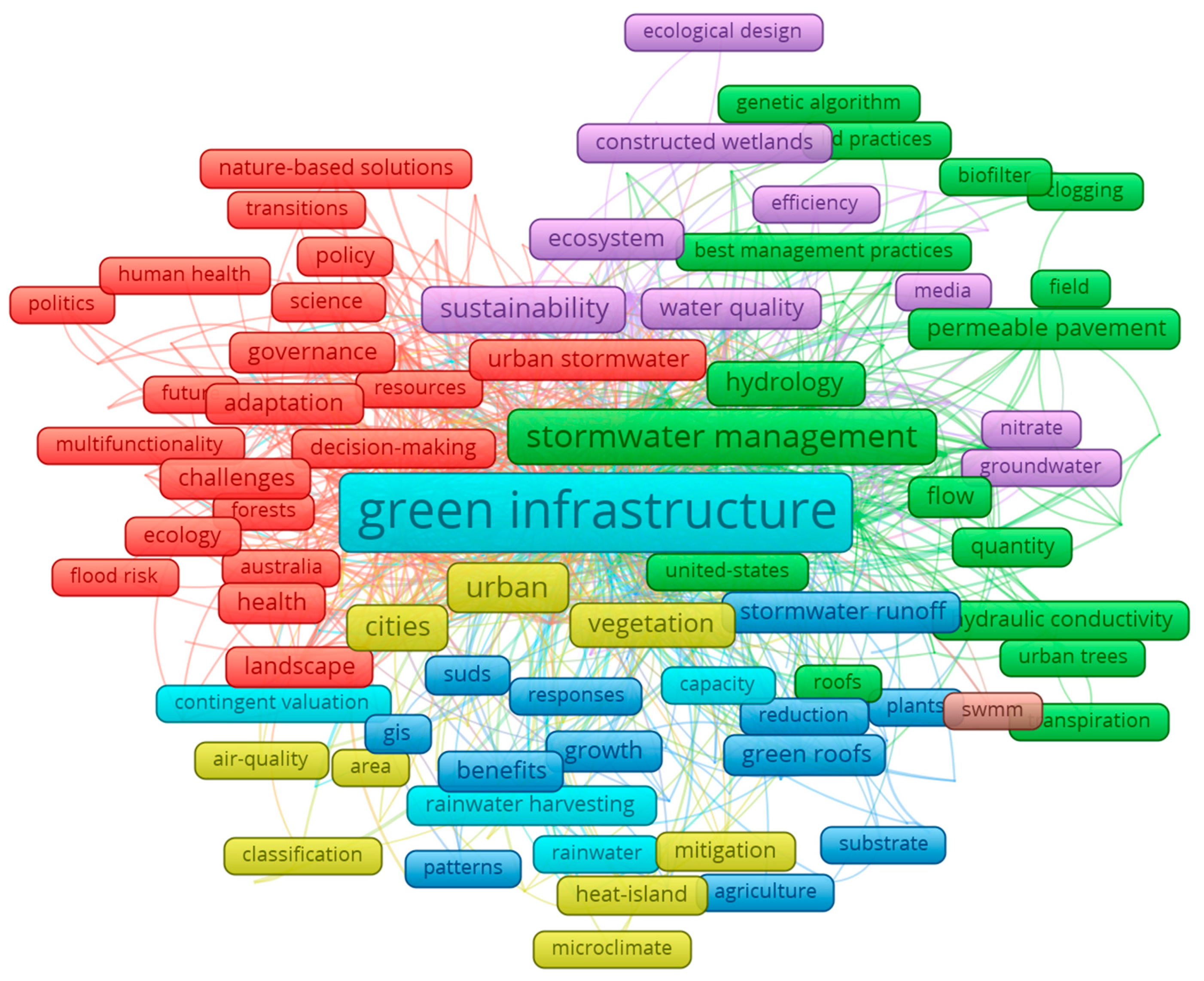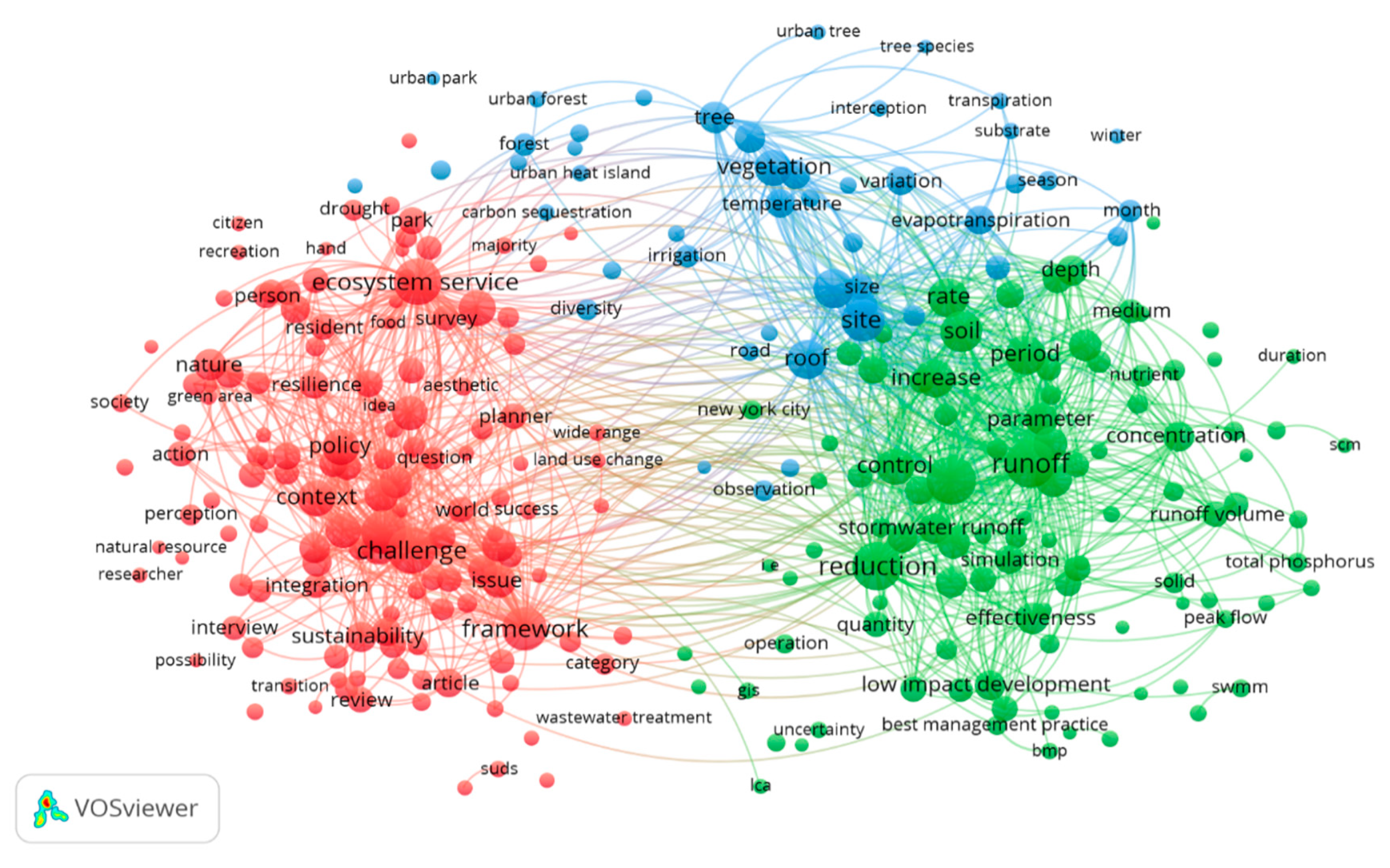1. Introduction
Water is an element of nature that is essential for human health, well-being and development, as well as for the conservation of the planet’s ecosystems and natural habitats [
1,
2,
3]. In July 2010, the United Nations General Assembly recognized its importance, establishing that every human being has the right to between 50 and 100 liters of safe and affordable water per person per day, and that access should be within 1000 meters or a maximum of half an hour from home [
4].
However, the extensive urbanization and the accelerated change in land uses that are taking place in different regions of the world are causing the over-exploitation and degradation of natural ecosystems, especially those related to the water cycle, such as rivers, aquifers or wetlands [
5,
6]. In this regard, it should be emphasized that agriculture currently represents about 70% of global freshwater use [
7]. This damage and over-exploitation of water resources produces a series of environmental conditions such as the decrease in rainwater infiltration and aquifer recharge, the widespread loss of water quality, and an increase in the problems derived from floods and torrential rains [
6,
8]. The gradual deterioration of water resources together with the continued increase in worldwide consumption, 1% per year since the 1980s [
9], has resulted in more than two billion people living in water-scarce countries; four billion people suffering from severe water shortages for at least one month a year; three out of ten people in the world without access to safe drinking water; and six out of ten people not having access to safe sanitation services [
9,
10,
11]. Both the decrease in freshwater resources by 40% and the increase in the world population for 2030, as foreseen by the United Nations World Water Assessment Programme (WWAP) [
12] could generate a world water crisis.
If we add to this situation the potential expected effects of climate change, such as increases in catastrophic storms and long periods of drought, we can affirm that in the near future and in many regions the security and sustainability of water for local populations is at risk [
6,
7,
8,
13]. There are climate models that predict that by 2050 an increase of 1.5 °C in the average global temperature of the planet could cause drought and habitat degradation that would make life difficult for 178 million people around the world, while the effect on the population of an increase of between 2 °C and 3 °C would be significantly higher, affecting between 220 and 277 million people, respectively [
7]. On the other hand, the number of people at risk of flooding is expected to increase from 1.2 billion today to 1.6 billion in 2050 (about 20% of the world´s population), which will cause the economic value of assets at risk to be about
$45 trillion by 2050, a growth of more than 340% compared to 2010 [
14].
In view of this scenario of climate change, demographic growth, increased urbanization rates and intensification of pollution, and degradation of water resources, it is essential and urgent that different countries and regions promote the implementation of measures that help transform the way water is managed. To respond to these great challenges, the different regions of the world can adopt, on the one hand, engineering or technological strategies; and/or, on the other hand, an alternative approach based on comprehensively managing natural and social systems in order to increase the benefits that nature provides for both human well-being, health and development [
15]. In the latter case, this refers to Nature-based Solutions (NbS), a concept defined by the International Union for Conservation of Nature (IUCN) that "encompasses all actions that rely on ecosystems and the services they provide, to respond to various societal challenges such as climate change, food security or disaster risk” [
16].
For too long human-made infrastructure, so-called gray infrastructure, has been used to solve water problems. Consequently, NbS which focus their attention on GI based on using natural and semi-natural areas to provide alternative water resource management have been neglected [
17,
18]. The great attraction of GI lies in the fact that it offers important environmental services related to water from three fundamental perspectives: smart growth, climate change adaptation, and health and wellbeing (
Figure 1).
Despite the fact that the term GI has recently become popularized, there is no universally accepted definition, as it is applied at different scales, for different issues, by different actors, including public managers, researchers and the general public [
19].
Consequently, GI is defined by researchers in different ways (see
Table 1), although there is general agreement that this term is multi-functional and delivers both ecological and social benefits [
20]. Although water issues are usually included in the various definitions of GI, when processes and components related to water and aquatic systems become particularly relevant to the solution of management problems, some authors use the term Blue Infrastructures as an alternative approach to GI [
21]. Within the framework of this concept, water bodies (lakes, lagoons, marshes, swamps), rivers, streams, springs and coastal ecosystems would be included.
Investment in GI is based on the logic that it will always be more profitable to invest in NbS than to replace these environmental services with human technological solutions [
34]. The development and conservation of a region´s GI is considered a sound strategy for nature, the economy and employment with a series of advantages [
21,
35,
36,
37], among which the following are worth noting (
Figure 2):
Economic cost savings. When GI is properly managed and maintained, it can lead to considerable cost savings, as it tends to improve the environmental services it provides over time, through the establishment of healthy ecosystems, the recovery of damaged habitats and the reconnection of natural and semi-natural fragmented areas. In contrast, gray infrastructure requires continuous investments to adapt to the rate of population growth and to cover its wear and tear [
35]. A clear example of gray infrastructure is the control of coastal erosion through the restoration of dunes, compared to the alternative of using coastal levees and breakwaters that tend to degrade over time.
Multifunctional character and lower environmental cost. Unlike gray infrastructure, which usually has a single objective, investments in water-related GI usually produce other positive externalities. Thus, for example, a treatment plant only serves to purify wastewater, while a natural wetland, in addition to purifying water, conserves biodiversity and is a carbon sink, among other advantages. On the other hand, investments in the conservation and improvement of the forests of receiving basins, in addition to improving the filtration and natural recharge of aquifers, also have other advantages, including help in controlling erosion, generating greater carbon sequestration, improving habitats and creating new recreational opportunities for the population. However, for this to happen, the ecosystem must be healthy [
35,
37,
38].
This multifunctionality of the GIs, which allows synergy and compensation between different environmental services, not only includes ecological aspects, but also includes important social aspects, especially in urban areas, which are important to identify, such as sustainable development, environmental justice and social cohesion [
39,
40].
Ability to adapt to different territorial scales. Unlike gray infrastructure, which normally operates locally, GI is close to a fractal structure, with elements ranging from the continental scale (for example, a large transnational mountain range that functions as an ecological corridor), to elements of smaller dimensions with value for the provision of environmental services at the local or urban level (for example, a wetland, which is responsible for purifying water and protecting against possible floods).
In this sense, if the interactions between ecological processes and human activities taking place at the local scale in the GIs of urban landscapes and socio-ecological systems are properly planned and managed, GIs will contribute to the conservation of biodiversity, the improvement of environmental quality, the reduction of the ecological footprint of urban environments, the adaptation of cities to climate change, social cohesion through the provision of spaces for social interaction, the alleviation of stress and fatigue and the promotion of volunteerism [
27,
41,
42,
43].
GI is configured as a very effective management tool, since from this approach alternatives can be proposed at different territorial levels.
Despite these advantages of GI, this type of action is frequently neglected by managers when making decisions or planning investments. This is largely due to the fact that, unlike what happens in gray infrastructure, the evidence of the benefits of GI is more difficult to quantify than the costs associated with its implementation [
24]. In general, this type of action requires more time for the results to be visible and it is difficult to assess their contribution in market terms. A reason for this is that in most of the territories there are gaps regarding the availability of historical data and economic valuation tools for environmental services [
38]. Despite this, studies carried out to date in different areas worldwide show greater profitability in the alternatives proposed from the GI approach than those proposed from the perspective of gray infrastructure [
37]. There is also scientific evidence that the gradual loss or degradation of the GIs that exist in or around urban areas causes long-term economic losses and affects the social and cultural values of cities [
44]. Furthermore, epidemiological studies show a positive relationship between longevity, health and access to elements of urban GIs [
45,
46].
Although it is considered to be in the early stages of development, various studies have shown the effectiveness and benefits of using GI for stormwater management, improving water quality, or retaining runoff [
6,
47,
48]. Regarding water resources, GI is presented as an important instrument for achieving and maintaining the health of aquatic ecosystems and offers multiple benefits related to increasing the availability of water for different uses, water purification, and conservation and protection of aquatic biodiversity, as well as for the adaptation and mitigation of the effects of climate change, such as floods, torrential rains or long periods of drought [
49].
On the other hand, in the scientific field, the number of publications focused on environmental services provided by natural ecosystems has increased considerably in the last three decades. Countries in Europe and North America have been the first to delve deeply and investigate these issues. Although it started publishing later, China has also rapidly promoted this line of research [
6,
50,
51].
For the above reasons, it is of great interest to understand the evolution of the publications that relate to these two concepts, GI and the water cycle, as well as the main areas of knowledge in which they have been developed. The knowledge generated by these studies is a very useful tool for the environmental policy agenda. The aim of this bibliometric study is to analyze the evolution of the scientific literature related to GI and the water cycle, that is, not only to analyze the current state of research on this specific topic but also identify trends and future lines of research. Bibliometric analysis permits the researcher to evaluate developments in knowledge on a specific subject and assesses the scientific influence of researchers and sources [
52]. There are already systematic reviews of the literature based on GI [
53] or related to a specific type of GI, such as greenways [
54], meta-analysis [
55] and other type of literature reviews [
27]. There are, as well, bibliometric analyses about water quality [
56], conservation [
57,
58,
59] or irrigation [
60]. However, to the best of our knowledge, there are no studies in the specialized literature that link the concepts of GI and water from a bibliometric perspective. In fact, the main contribution of this work is that it presents the current state of knowledge about GI that serves as a basis for the study, design and implementation of new water management models for both scientists and policy-makers.
4. Conclusions
This work serves to confirm that, in the field of water study, the term GI is relatively new, since it first appeared in the early 21st century. The use of this term grew exponentially from 2013, coinciding with the increase in work and research related to the environmental services of ecosystems and the possibilities that nature offers to tackle problems related to urban planning, the management and purification of water, agri-food security, flood control or adaptation to climate change. In the case of Europe, it coincides with the GI strategy of the European Commission to improve the economic benefits of this tool and thus achieve its biodiversity objectives for 2020. This growth in the volume of publications on GI is expected to continue in the future, not only because of the economic benefits that GIs generate but also because of the ecological, social, and public health and welfare benefits.
On the other hand, it is worth mentioning that the most cited articles during the period studied, to a large extent, deal with issues related to the conservation and management of IGs for the improvement of the environmental quality of urban environments, which shows a growing involvement of urban planning professionals in this field.
The non-existence of a universally accepted definition of GI calls for further efforts in this type of literature that favor consistency and clarity in this field of research. Despite this, it appears from this analysis that we are dealing with a field of research widely spread across all continents (with the exception of Africa), with the United States, China, United Kingdom and Australia publishing the greatest number of articles on GI and water. Likewise, its multidisciplinary character is reflected in the diversity of areas of knowledge with which it interacts, including topics such as those related to protection against natural disasters, the provision and regulation of water resources such as groundwater and reservoirs, the planning and environmental improvement of urban spaces, health, the ecology and conservation of biodiversity, and adaptation to the effects of climate change.
This research indicates that in the scientific literature related to GI and water management the concept with greatest relevance is ecosystem services, a fact that values the capacity of these infrastructures to facilitate multiple goods and services related to the water cycle, such as the potable water supply, climatic regulation, flood control, water purification or disposition of spaces of recreation for the population.
The scientific literature focusing on the importance of GI in water management has been dominated by concepts such as ecosystem services, stormwater management, climate change and sustainability, terms which are considered to be the most widely used in this field. In fact, the importance of the concept of ecosystem services indicates that green infrastructure is an essential tool for improving human well-being by NbS. Also, the latest keyword trends focus on aspects related to NbS such as stormwater management, forests and green rooves, among others. Therefore, from this perspective, the opportunity is opened for new lines of research based on the analysis of other elements related to GI, such as groundwater.
On the other hand, GI offers the opportunity to lessen the adverse effects of climate change and, thus, generate important benefits from the perspective of human health and well-being. In the current context of the global health crisis, another recommendation for future research is to continue advancing precisely the analysis of the role of GI from the perspective of public health. Consequently, it is also necessary to improve the definition of GI and future work is needed to advance the search for new methodologies that facilitate an assessment of the monetary and non-monetary benefits of GI.
Likewise, the current global crisis opens up lines of research in the field of green infrastructure as an emerging sector in the process of economic reconstruction after the harmful consequences of the Covid-19 pandemic.
This work is not exempt from certain limitations as it has been limited to an analysis of the role of GI in water management. It would be interesting to repeat this analysis process for other types of infrastructure of a similar nature. Likewise, another proposal for a future line of research consists of not limiting the analysis to water resources but rather extending it to other natural resources.
